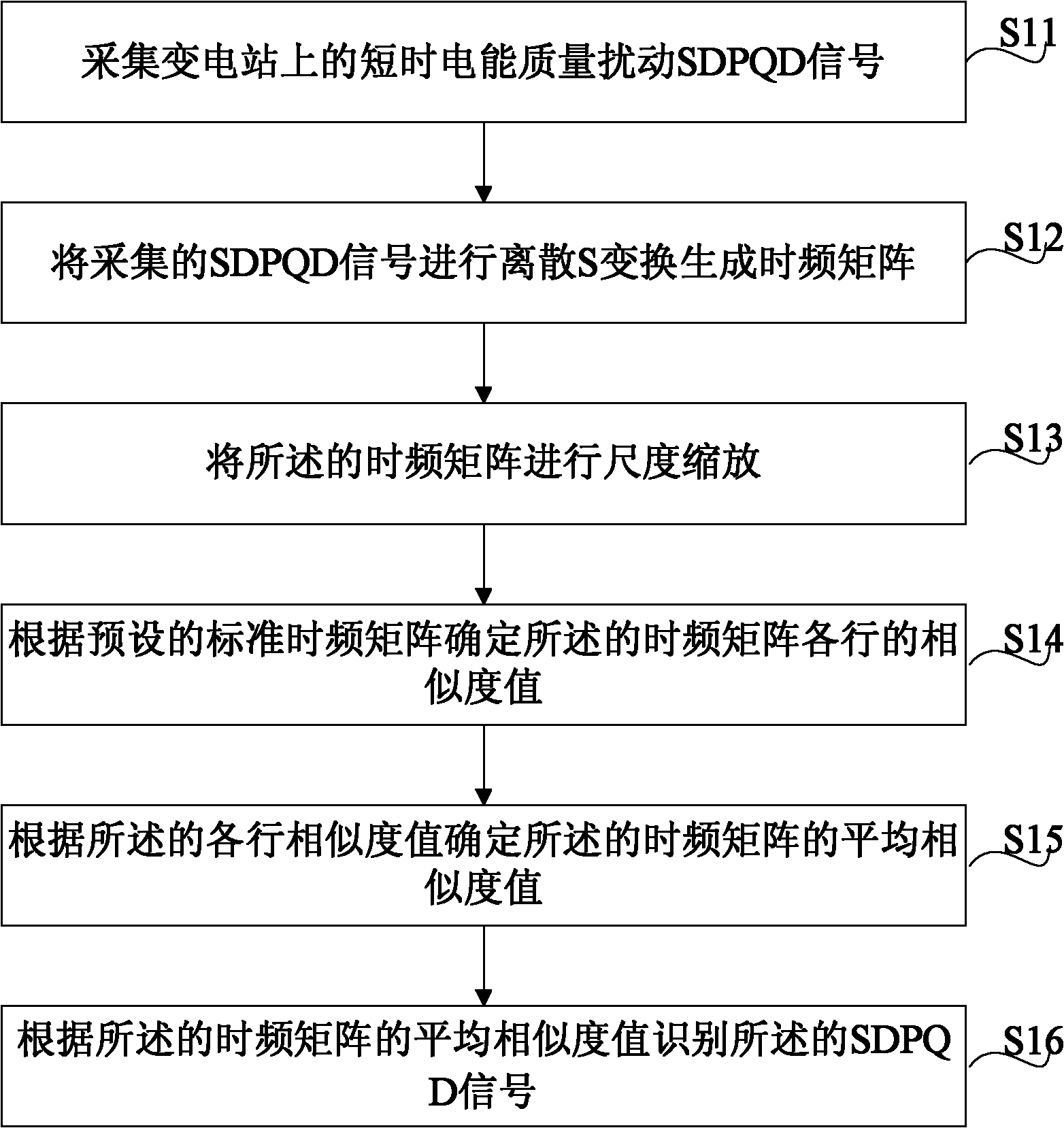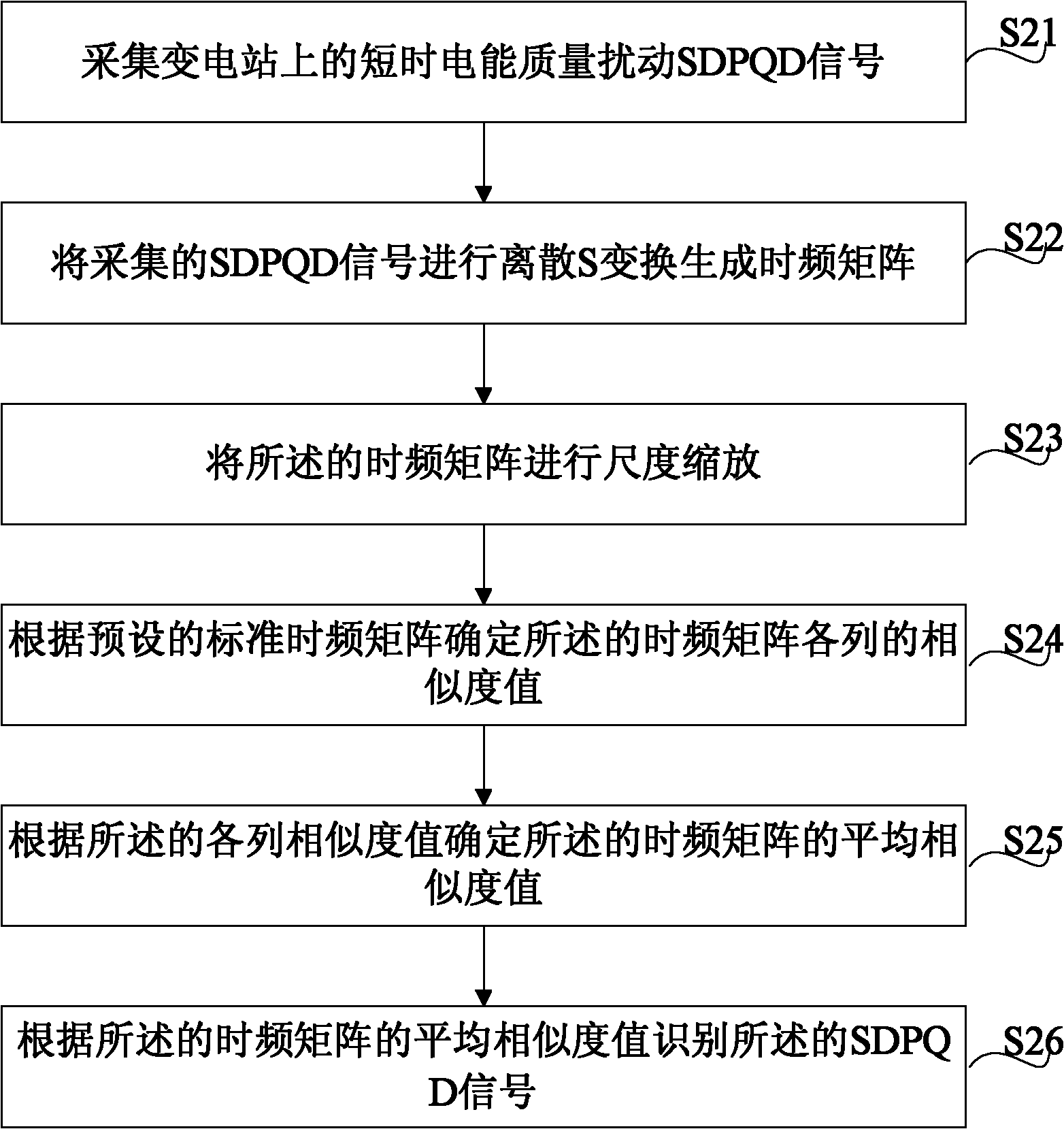S conversion based SDPQD (Short Duration Power Quality Disturbance) signal identifying method, device and system
An identification method and signal technology, which is applied in the direction of measuring electrical variables, measuring devices, instruments, etc., can solve the problems of inability to identify complex disturbance signals of transient oscillations, and achieve the effect of high accuracy and simple identification process
- Summary
- Abstract
- Description
- Claims
- Application Information
AI Technical Summary
Problems solved by technology
Method used
Image
Examples
Embodiment approach 2
[0186] The first average similarity value determination means 2015 and the first signal identification means 2016 in the second embodiment are the same as the first average similarity value determination means 2015 and the first signal identification means 2016 in the first embodiment, and will not be repeated here .
[0187] Figure 10 It is a structural block diagram of a third implementation of an S-transform-based SDPQD identification device according to an embodiment of the present invention, consisting of Figure 10 It can be seen that the described SDPQD identification device 20 based on S transform comprises:
[0188] The second signal collection device 2021 is used to collect the SDPQD signal on the substation;
[0189] The second signal transforming device 2022 is used to perform discrete S transform on the collected SDPQD signal to generate a time-frequency matrix;
[0190] The second scaling device 2023 is configured to scale the time-frequency matrix;
[0191]...
Embodiment approach 4
[0226] The second average similarity value determination means 2025 and the second signal identification means 2026 in Embodiment 4 are the same as the second average similarity value determination means 2025 and the second signal identification means 2026 in Embodiment 3, and will not be repeated here .
[0227] The technical solutions of the present invention will be described in detail below in conjunction with specific embodiments. For the 8 types of standard time-frequency domain matrices preset in the SDPQD signal recognition equipment based on S-transform, each type of standard time-frequency domain matrix randomly collects 100 signal samples, a total of 800 signal samples, and calculates the 800 signal samples after S-transform The similarity between each disturbance feature matrix scaled by time-frequency scale and 8 types of standard time-frequency domain matrices. Table 2 lists the average similarity between 100 signal samples of each type of standard time-frequenc...
PUM
 Login to View More
Login to View More Abstract
Description
Claims
Application Information
 Login to View More
Login to View More - R&D
- Intellectual Property
- Life Sciences
- Materials
- Tech Scout
- Unparalleled Data Quality
- Higher Quality Content
- 60% Fewer Hallucinations
Browse by: Latest US Patents, China's latest patents, Technical Efficacy Thesaurus, Application Domain, Technology Topic, Popular Technical Reports.
© 2025 PatSnap. All rights reserved.Legal|Privacy policy|Modern Slavery Act Transparency Statement|Sitemap|About US| Contact US: help@patsnap.com



